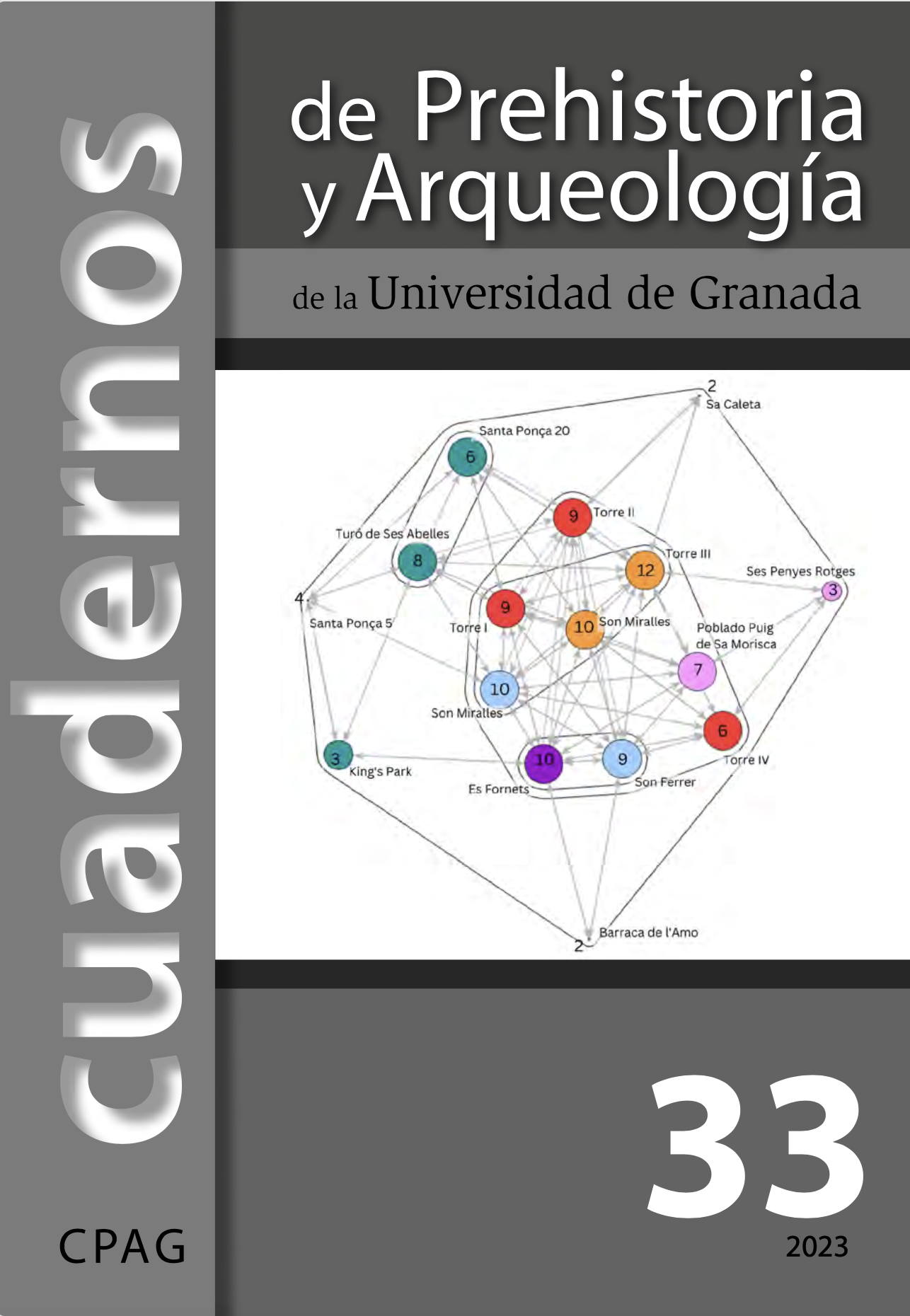GRAVE 3 AT TABAYÁ (ASPE, ALICANTE) AND THE USE OF WOOD IN THE ARGARIC FUNERARY RECORD
Main Article Content
Vol. 33 (2023), Archeological data, pages 299-327
Submitted: Jul 26, 2023
Accepted: Nov 14, 2023
Published: Dec 29, 2023
Abstract
The analysis of some wooden remains found in the Argaric settlement of Tabayá (Aspe, Alicante) is presented. They come from Tomb 3, a pit or covacha type burial that was partially closed with planks. Although it is rarely documented in the north-eastern part of the Argaric territory, the use of wood is not exceptional in the context of Argaric funerary practices. A review of the available record throughout the Argaric territory shows that graves provide, on the other hand, the most favourable context for the conservation of wood, which was used both for the construction of the tombs and for the elaboration of handles and other tools deposited inside.
Keywords:
Iberian Peninsula, Bronze Age, Wood, Burial record, Argar culture
Downloads
Article Details
How to Cite
HERNÁNDEZ PÉREZ, M. S., Badal García, E., López Padilla, J. A., & Jover Maestre, F. J. (2023). GRAVE 3 AT TABAYÁ (ASPE, ALICANTE) AND THE USE OF WOOD IN THE ARGARIC FUNERARY RECORD. Cuadernos De Prehistoria Y Arqueología De La Universidad De Granada, 33, 299–327. https://doi.org/10.30827/cpag.v33i0.28804



